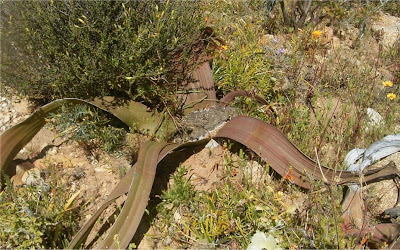Welwitschia mirabilis is a non-succulent and true desert plant growing in the sand of the Namib Desert along the west coast of Namibia. It is also found in Angola.
This unique gymnosperm (related to pine trees and cycads) is an extremely slow grower and plants can reach an estimated age of up to 2000 years. Similar to other members of the group the seed is borne in cones.
The plants are dioecious (unisexual) and male and female cones are found on different plants.
The Namib has an extremely hot and barren climate and Welwitchias are often found in areas devoid of any other flora. The plants receive most of their water supply from early morning fog and perhaps underground water sources. Water can be absorbed directly through the stomata of the leaves.
Welwitschia mirabilis is relatively easy to grow from seed with similar watering rules as succulent plants in general. Growth in cultivation can be much quicker and cone bearing plants have been produced from seed within three years at the Karoo Botanical Garden in Worcester.
The Afrikaans common name is "Tweeblaarkanniedood". Welwitschia mirabilis in cultivation at the Karoo Botanical Garden in Worcester.
Welwitschia mirabilis in cultivation at the Karoo Botanical Garden in Worcester.
Subscribe to:
Post Comments (Atom)

Post a Comment